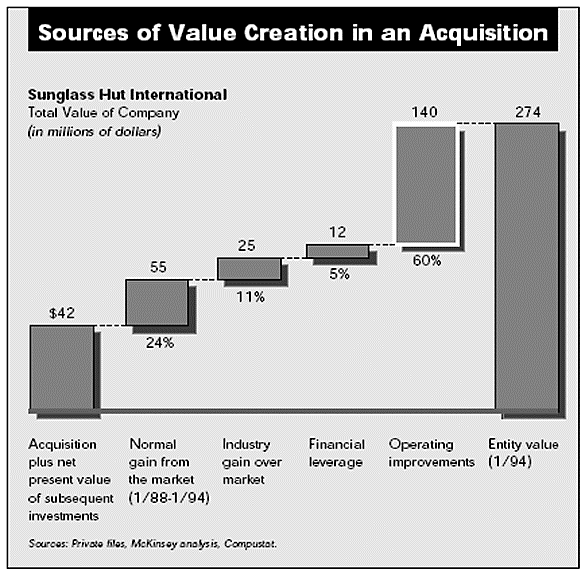Service objectives
The following list represents the Key Service Objectives (KSO) for the Appleton Greene Business Development service.

Company Analysis
The first service to be provided is an extensive analysis of the company that I have been retained for as a consultant. That includes the actual business development plan or strategy, the structure of the company (departments, divisions, areas), an organizational chart, some basic financial information, the sales strategy plan, marketing plans, client list, providers list, potential customer list, markets to be targeted or that are being targeted already, production process chart (depending on the company type this production process will refer to either services or products), a competitor’s list and a customer relationship management program if any. Also this information will give the company a picture of their real actual situations in terms of business development and business growth. Having all this information collected it allows me to identify the Strengths, Weaknesses, Opportunities and Threats (SWOT) and create a simple chart that will be the basis of the Business Development Plan to be developed. This data will also give us the path to search for potential growth opportunities.

Feedback Gathering
After reviewing all the data compiled before and after doing the actual photography of the company and the first sketch of the Business Development Plan (BDP), what is most important is to gather as much information from the key employees and executives of the company. This will help us to get and integrate their feedback, experience and knowledge into the plan and to make sure that all of them are engaged and motivated to make sure the company is ready for the implementation of the growth opportunity successfully. Also this will help us to evaluate if the Business Development Plan will be implemented and effective in a near future.

Market Research
It is very important to obtain an accurate market analysis to understand and identify the potential growth opportunities for the company and target potential direct clients. This information will help us to draw the path on the business development strategy to follow, without having a clear understanding of the market and without having a big list of targets is going to be difficult to implement a business development strategy. To get this information we will be using the market studies the company may already have, internet research, press notes and any instrument that may give us enough data to proceed with the plan. Then we will collaborate with marketing and sales departments to align the three strategies since, obviously, they need to follow the same path and become one single goal for the company.

Prepare Plan
The key elements to consider when the plan is developed and prepared are: actual situation of the company, products or services the company wants to sell and understanding its production, the market situation and goals to be achieved and expectations (results and timing). Then, the process is to follow a methodology (step by step for all departments involved and even including senior management) to implement the plan. It is important to engage the key employees and/or management that will be directly involved on the action plan since a business development plan is always a team work.
BDP Implementation
The final step of the Business Development Plan (BDP) is to implement the strategy that has been developed by the consultant along with management and key employees. This means to take action and start the new process of finding new opportunities for potential growth. One of the first steps is to integrate CRM (Client Relationship Management) software in the company if there was not any. This software helps to keep up to date the status of relationship with Clients and, especially and foremost, to coordinate the efforts and actions taken by the marketing department, the sales department and the business developer thus helping to make some strategic decisions as a team and avoiding mistakes such as repeating contacts to the same client from different departments which makes you look inefficient an internally uncoordinated. This CRM software may also be connected to any sales, marketing and accounting programs to “square the round” and have a complete Costumer File (CF) where, in one click, you may see all the actions and activity done with this specific client. Then you complete your full Customer Database and your follow up for any client becomes really easy.
Accountancy
Every business, whether they are a huge multinational or a small enterprise, needs an accountant. Generally accountants offer financial advice to clients by managing cash flow and monitoring profit and loss, but this is increasingly joined by the supply of financial information that could influence the strategic development of organizations. The Accountancy sector is modern and fast-moving. It uses the latest technology and attracts some of the most motivated and intelligent graduates from a wide variety of degree backgrounds. Globally, the accountancy sector is dominated by the “Big Four” accountancy firms – PriceWaterhouseCoopers, Ernst & Young, KPMG and Deloitte & Touche – and their thirst for new talent is a year-round strategy. Nearly 10 percent of all graduates choose a career in accountancy, and a vast majority of them go into audit departments within the Big Four. The global accountancy market has grown by 3.4% to reach a value of $364.3 billion. The global accountancy market is forecast to have a value of $487.6 billion, an increase of 33.9%. The global accountancy market has total revenues of $396.0bn, representing a compound annual growth rate (CAGR) of 2.7%.
Construction
In the United States, the industry has around $850 billion in annual revenue according to statistics tracked by the Census Bureau, with an $857 billion annual rate, of which $600 billion is private (split evenly between residential and nonresidential) and the remainder is government. There are about 667,000 firms employing 1 million contractors (200,000 general contractors, 38,000 heavy, and 432,000 specialty); the average contractor employs fewer than 10 employees. As a whole, the industry employs an estimated 5.8 million. A salary survey revealed the differences in remuneration between different roles, sectors and locations in the construction and built environment industry. The results showed that areas of particularly strong growth in the construction industry, such as the Middle East, yield higher average salaries than in the UK for example. Despite adverse economic conditions, the global construction industry has witnessed growth during the past five years and the market is forecast to reach US $8,929 billion with a CAGR of 7.3% over the next five years. The Construction industry consists of establishments primarily engaged in the construction of residential construction, commercial buildings, and infrastructural projects. The industry also includes additions, alterations, maintenance, and repairing activities. The industry is highly fragmented in terms of suppliers and buyers and highly dependent on consumer spending, interest rates, and government spending in different countries.
Consultancy
Management consulting, the practice of helping organizations to improve their performance, operates primarily through the analysis of existing organizational problems and the development of plans for improvement. Organizations may draw upon the services of management consultants for a number of reasons, including gaining external (and presumably objective) advice and access to the consultants’ specialized expertise. Consultancies may also provide organizational change-management assistance, development of coaching skills, process analysis, technology implementation, strategy development, or operational improvement services. Management consultants often bring their own proprietary methodologies or frameworks to guide the identification of problems and to serve as the basis for recommendations for more effective or efficient ways of performing work tasks. Management consulting has grown quickly, with growth rates of the industry exceeding 20% during the past 30 years. As a business service, consulting remains highly cyclical and linked to overall economic conditions. Currently, there are three main types of consulting firms. Large, diversified organizations, Medium-sized management consultancies and boutique firms that have focused areas of consulting expertise in specific industries, functional areas, technologies, or regions of the world. The value of the management & marketing consultancy market is calculated as the total revenues received for the provision of corporate strategy services, operations management services, information technology solutions, human resource management services and outsourcing services. The global management & marketing consultancy market has total revenues of $305.0bn, representing a compound annual growth rate (CAGR) of 3%. The operations management segment is the market’s most lucrative, with total revenues of $93bn, equivalent to 30.5% of the market’s overall value. The performance of the market is forecast to accelerate, with an anticipated CAGR of 7% during the next 5 years, which is expected to drive the market to a value of $427.9bn.
Real Estate
The Real Estate and Rental and Leasing sector comprises establishments primarily engaged in renting, leasing, or otherwise allowing the use of tangible or intangible assets, and establishments providing related services. The major portion of this sector comprises establishments that rent, lease, or otherwise allow the use of their own assets by others. The assets may be tangible, as is the case of real estate and equipment, or intangible, as is the case with patents and trademarks. This sector also includes establishments primarily engaged in managing real estate for others, selling, renting and/or buying real estate for others, and appraising real estate. These activities are closely related to this sector’s main activity, and it was felt that from a production basis they would best be included here. In addition, a substantial proportion of property management is self-performed by lessors. The main components of this sector are the real estate lessors industries (including equity real estate investment trusts (REITs); equipment lessors industries (including motor vehicles, computers, and consumer goods); and lessors of non-financial intangible assets (except copyrighted works). After years of decline in the wake of the sub-prime mortgage crisis, the credit crunch and the Great Recession, the Real Estate Sales and Brokerage industry is finally beginning to recover. Although revenue remains below its pre-recession peak at the height of the housing bubble, during the next five years, industry revenue is expected to increase at an annualized rate of 3.4% to reach $114.0 billion.
Retail
Retail is the sale of goods and services from individuals or businesses to the end-user. Retailers are part of an integrated system called the supply chain. A retailer purchases goods or products in large quantities from manufacturers directly or through a wholesale, and then sells smaller quantities to the consumer for a profit. Retailing can be done in either fixed locations like stores or markets, door-to-door or by delivery. An increasing amount of retailing is done using online websites, electronic payment, and then delivered via a courier or via other services. Rising GDP growth, burgeoning population, greater disposable income, and increasing consumer spending are combining to drive the Global Retail industry and opportunities for retail segment players. The market is forecast to reach an estimated $20,002 billion with a CAGR of 3.9% over the next five years. The retail industry comprises establishments engaged in selling merchandise or commodities for personal or household consumption, mainly consisting of apparel and accessories, technology, food and beverages, home improvement, specialty, pharmaceuticals, and others. Recently, as developed nations begin to emerge from recession, their economies recover, and unemployment rates begin to fall, the market segments are experiencing some renewed growth. The retail industry is highly fragmented and is dependent on macroeconomic factors such as GDP, disposable income, and consumer spending. Asia Pacific (APAC) dominates the industry, representing 35% of the global market. The APAC retail industry is expected to drive the market and grow at the highest rate among all regions. The global economic recession, inflation, and high unemployment rates are some of the challenges that are negatively affecting the retail industry. Conversely, some factors that are likely to boost sales in the industry include urbanization, technological growth, increase in product demand and selection, and the continued popularity of online purchasing. A combination of factors such as demographics and consumer spending habits impacts market dynamics significantly.
Bronze Service

Monthly cost: USD $1,000.00
Time limit: 5 hours per month
Contract period: 12 months
Bronze service includes:
01. Email support
02. Telephone support
03. Questions & answers
04. Professional advice
05. Communication management

SERVICE DESCRIPTION
The Bronze Client Service (BCS) for Business Development provides clients with an entry level option and enables client contacts to become personally acquainted with Ms. Juliol over a sustainable period of time. We suggest that clients allocate up to a maximum of 5 Key Employees for this service. Your Key Employees can then contact the consultant via email, whenever they feel that they need specific advice or support in relation to the consultant’s specialist subject. The consultant will also be proactive about opening and maintaining communications with your Key Employees. Your Key Employees can list and number any questions that they would like to ask and they will then receive specific answers to each and every query that they may have. Your Key Employees can then retain these communications on file for future reference. General support inquiries will usually receive replies within 48 hours, but please allow a period of up to 10 business days during busy periods. The Bronze Client Service (BCS) enables your Key Employees to get to know their designated Appleton Greene consultant and to benefit from the consultant’s specialist skills, knowledge and experience.
Silver Service

Monthly cost: USD $2,000.00
Time limit: 10 hours per month
Contract period: 12 months
Bronze service plus
01. Research analysis
02. Management analysis
03. Performance analysis
04. Business process analysis
05. Training analysis

SERVICE DESCRIPTION
The Silver Client Service (SCS) for Business Development provides more time for research and development. If you require Ms. Juliol to undertake research on your behalf, or on behalf of your Key Employees, then this would understandably require more time and the Silver Client Service (SCS) accommodates this. For example, you may want your consultant to undertake some research into your management, performance, business, or training processes, with a view towards providing an independent analysis and recommendations for improvement. If any research and development, or business analysis is required, then the Silver Client Service (SCS) is for you.
Gold Service

Monthly cost: USD $3,000.00
Time limit: 15 hours per month
Contract period: 12 months
Bronze/Silver service plus
01. Management interviews
02. Evaluation and assessment
03. Performance improvement
04. Business process improvement
05. Management training

SERVICE DESCRIPTION
The Gold Client Service (GCS) for Business Development is intended for more detailed evaluation and assessment, that may require your Key Employees to have monthly meetings or interviews with Ms. Juliol. These meetings and interviews can be conducted over the telephone, Skype, or by video conference if required. The consultant can also attend your business premises, an Appleton Greene office, or another mutually beneficial location, but please note that clients are responsible for the costs of any disbursements separately, including travel and accommodation. This service enables you to integrate the specific skills, knowledge and experience of your designated consultant into your Key Employee management team. The Gold Client Service (GCS) can also incorporate training workshops, business presentations and external meetings with customers, suppliers, associations, or any other business-related stakeholders.
Platinum Service

Monthly cost: USD $4,000.00
Time limit: 20 hours per month
Contract period: 12 months
Bronze/Silver/Gold service plus
01. Project planning
02. Project development
03. Project implementation
04. Project management
05. Project review
 SERVICE DESCRIPTION
SERVICE DESCRIPTION
The Platinum Client Service (PCS) for Business Development is our flagship service and will be required if you need Ms. Juliol to facilitate the planning, development, implementation, management, or review of a particular project relating to his specialist subject, which would obviously require more time and dedication. This service enables you to reserve up to 12.5% of the consultant’s working month and provides a more hands-on service as and when required. If you need more time than this, then this can always be arranged, subject of course to the consultant’s ongoing availability. The benefit of having an external consultant involved in projects is they provide an independent perspective and are not influenced by internal politics, day-to-day responsibilities, or personal career interest. They provide objectivity, specific knowledge, skills and experience and will be entirely focused upon the tasks at hand. The Platinum Client Service (PCS) will provide your organization with a valuable resource as and when you need it.
Benefits
Customer Service
- Business growth
- Customer satisfaction
- Reduced risk
- Employees motivation
- Process improvement
- Increased efficiency
- Happy shareholders
- Better reputation
- Repeating business
- Sales increased
Management
- Increased motivation
- Clear expectations
- Enhanced efficiency
- Issues solutions
- Strategic goals
- Business plan
- Issues prevention
- Better performance
- Internal communication
- Customer service
Marketing
- Branding position
- Better image
- Product promotion
- Customer motivation
- Shorter response
- More sales
- Valuable relationships
- Community service
- Gain credibility
- High-quality content
Clients
This service’s current clients or employers include:

PGI Engineering
Since 1992, PGI Grup has been composed by different engineering companies and technical consulting firms specialized in MEP & FP design, facilities monitoring and maintenance, energy… for all different kinds of buildings and has designed more than 3000 projects worldwide. Its trademark accompanies PGI Engineering through its national and international expansion, by means of its own headquarters in Spain and other collaboration agreements -Joint ventures- in Europe (France and Switzerland), Latin America (Mexico, Peru, Bolivia and Brazil), North America and North Africa (Morocco), as well as being involved directly or indirectly in several projects in more than 20 countries. Professionals composing PGI Engineering have multidisciplinary training in different areas of the sector, as well as good knowledge and market experience. Approaching and understanding the different needs of each individual client, adjusting to the real necessities of each project and carrying out the adequate tasks at every moment ensures every project has the “Engineered by PGI” identity

Rilea Group
Based in Miami, Rilea Group is a full real estate development company that since 1981 has been developing real estate projects in South Florida and offers investors and land owners an opportunity to work with a successful, experienced and multifaceted real estate development and management company. Whether building at the leading edge of suburban growth or developing multi-use urban centers in the core of the financial district, we offer individual and institutional investors opportunities to take advantage of the South Florida real estate market with over 8,000,000 square feet of construction already built or being developed. Rilea Group has the comprehensive skills in all facets of development required for the successful completion and profitability of a given project. Zoning properties, planning overall projects, design product to meet market demands, negotiate the required financing, negotiating and awarding the construction bids to the appropriate general contractors, coordinating, supervising and completing construction projects as well as managing and leasing rental apartment’s projects and designing the proper marketing campaigns are all capabilities constantly implemented by us. Much of our real estate portfolio in rental apartments and other types of income producing properties is for long-term ownership with an eye towards both income and appreciation. Experienced management and leasing teams provide the crucial elements for success and by focusing on property maintenance and cost awareness, Rilea Group’s real estate income producing assets generate anticipated returns and provide for a profitable disposition when the time arrives

Spain-U.S. Chamber of Commerce
The Official Spain-U.S. Chamber of Commerce is a non-profit organization recognized by the Spanish Government dedicated to enhancing business and commercial ties between Spain and the U.S. Founded over thirty years ago and located in Miami, this Chamber is considered one of the largest bi-national Chambers of Commerce in the South Eastern U.S. given its strategic geographical location, its multicultural composition and its excellent communication network, Miami is the perfect city to target the U.S., Caribbean and the Latin American markets. The Chamber is an active association of Spanish and non-Spanish companies that represent a broad range of goods and services. It creates a forum for commercial and business exchange among members.
Spain-U.S. Chamber of Commerce – Click Here

Dragados
Dragados Group is one of the construction arms of the ACS Group. The ACS Group, ranked 4th overall on the 2013 ENR 250 Global Contractor List, operates in 68 countries, and has consistently been ranked by Public Works Financing (PWF) as the leading concession group in the world. Founded in 1941, Dragados Group has unmatched international experience in infrastructure, bridge, highway, tunnel, dam and marine projects, and is a leader in alternative project delivery, including design-build projects for public and private owners. Dragados has built over 5,282 miles of highways, 3,107 miles of roads, 1,500 bridges, 840 miles of tunnels, 230 dams, 528 miles of railways, rail transit and numerous rail facilities, and airports. Dragados has extended its world-wide presence, opening a new affiliate in Australia. Dragados follows the strictest safety and quality standards on its construction sites and is certified ISO 9001:2008, ISO 14000 and OSHA 18000 company, and it is currently implementing ISO 31000. In addition to a Research and Development (R&D) department that fosters the development and usage of innovative construction methods and materials, Dragados has an in-house Technical/Engineering Services Division tasked with providing innovative solutions and incorporating into our new major and design-build projects the lessons learned throughout our extensive history. Our success is the result of our dedication to project performance, quality and safety, our compliance with project schedule and cost requirements, and our commitment to reaching out and providing work opportunities to minorities and disadvantaged groups

OHL
Obrascón Huarte Lain (OHL) is a large international concessions and construction group with more than 100 years of history. It operates in more than 30 countries across 5 continents. At present, the OHL Group is an international leader in the construction of hospitals and railways, an strategic developer of public-private projects, a leader in roadways and bridges building; the 31st largest international contractor and 8th in Latin America and a core shareholder of Abertis, the world leader in toll roads. OHL Group operates in the US through its subsidiary OHL USA. This affiliate has expanded its presence in the United States construction sector through both the acquisition of local companies and organic building of teams of professionals with extensive experience in their markets. OHL USA focuses on safety and quality, is committed to building a culture that promotes the advancement of small, disadvantaged, minority, and women-owned businesses. The firm’s established presence in major local markets is supported by the financial strength and diverse international experience of the OHL Group. This allows OHL to deliver customized services to its clients under any delivery method.

Barcelona, Spain
The Barcelona metropolitan area comprises over 66% of the people in one of the richest regions in Europe – Catalonia, with a GDP per capita amounting to 16% more than the EU average. The Barcelona metropolitan area had a GDP amounting to 44% more than the EU average making it the 4th economically powerful city by GDP in the European Union and 35th in the world. Furthermore, Barcelona is Europe’s fourth best business city and fastest improving European city. Barcelona is the 14th most”livable city” in the world according to lifestyle magazine Monocle. Barcelona has a long-standing mercantile tradition. Less well known is that the region was one of the earliest to begin industrialization in continental Europe, beginning with textile-related works. Since then, manufacturing has played a large role in its history.

Madrid, Spain
Madrid is a major centre for international business and commerce. It is one of Europe’s largest financial centres and the largest in Spain. Madrid has become the 23rd richest city in the world and third richest in Europe in terms of absolute GDP; behind the considerably larger cities of Paris and London and ahead of Moscow and Barcelona. Additionally in terms of GDP per capita, the Madrid region is the richest in Spain and one of the richest in Europe. Madrid is a global financial leader, rising to the top five Centres of Commerce in Europe. Madrid continues its upward trajectory as a key European city, rising to number 11 globally and to the number 5 spot in Europe. Madrid’s stable GDP, exchange rate and strong bond market, coupled with a high standard of living, place this city in the company of Europe’s most prominent cities: London, Paris, Frankfurt and Amsterdam.

Mexico City, Mexico
Mexico City is one of the most important economic hubs in Latin America. The city proper (Federal District) produces 21.8% of the country’s gross domestic product. According to a study conducted by PricewaterhouseCoopers, Mexico City had a GDP of $390 billion, ranking as the eighth richest city in the world after the greater areas of Tokyo, New York, Los Angeles, Chicago, Paris, London and Osaka/Kobe, and the richest in the whole of Latin America, as measured by the GDP of the entire Metropolitan area. making Mexico City alone the 30th largest economy in the world. Mexico City is the greatest contributor to the country’s industrial GDP (15.8%) and also the greatest contributor to the country’s GDP in the service sector (25.3%). Due to the limited non-urbanized space at the south – most of which is protected through environmental laws – the contribution of the Federal District in agriculture is the smallest of all federal entities in the country. Mexico City has one of the world’s fastest-growing economies and its GDP is set to double. Mexico City has an HDI index of 0.915 identical to that of the Republic of Korea. The level of household expenditure in Mexico City is close to that of an average household in Germany or Japan. The top twelve percent of GDP per capita holders in the city had a mean disposable income of US $98,517. The high spending power of Mexico City inhabitants makes the city attractive for companies offering prestige and luxury goods

Mexico City, Mexico
Mexico City is one of the most important economic hubs in Latin America. The city proper (Federal District) produces 21.8% of the country’s gross domestic product. According to a study conducted by PricewaterhouseCoopers, Mexico City had a GDP of $390 billion, ranking as the eighth richest city in the world after the greater areas of Tokyo, New York, Los Angeles, Chicago, Paris, London and Osaka/Kobe, and the richest in the whole of Latin America, as measured by the GDP of the entire Metropolitan area. making Mexico City alone the 30th largest economy in the world. Mexico City is the greatest contributor to the country’s industrial GDP (15.8%) and also the greatest contributor to the country’s GDP in the service sector (25.3%). Due to the limited non-urbanized space at the south – most of which is protected through environmental laws – the contribution of the Federal District in agriculture is the smallest of all federal entities in the country. Mexico City has one of the world’s fastest-growing economies and its GDP is set to double. Mexico City has an HDI index of 0.915 identical to that of the Republic of Korea. The level of household expenditure in Mexico City is close to that of an average household in Germany or Japan. The top twelve percent of GDP per capita holders in the city had a mean disposable income of US $98,517. The high spending power of Mexico City inhabitants makes the city attractive for companies offering prestige and luxury goods

Miami, FL
Miami is a major center of commerce, finance, and boasts a strong international business community. According to the ranking of world cities undertaken by the Globalization and World Cities Study Group & Network (GaWC) and based on the level of presence of global corporate service organizations, Miami is considered a “Alpha minus world city”. Miami has is ranked 20th worldwide in GMP, and 11th in the United States. Several large companies are headquartered in or around Miami, including but not limited to: Akerman Senterfitt, Alienware, Arquitectonica, Arrow Air, Bacardi, Benihana, Brightstar Corporation, Burger King, Celebrity Cruises, Carnival Corporation, Carnival Cruise Lines, CompUSA, Crispin Porter + Bogusky, Duany Plater-Zyberk & Company, Espírito Santo Financial Group, Fizber.com, Greenberg Traurig, Holland & Knight, Inktel Direct, Interval International, Lennar, Navarro Discount Pharmacies, Norwegian Cruise Lines, Oceania Cruises, Perry Ellis International, RCTV International, Royal Caribbean Cruise Lines, Ryder Systems, Seabourn Cruise Line, Sedano’s, Telefónica USA, TeleFutura, Telemundo, Univision, U.S. Century Bank,Vector Group and World Fuel Services. Because of its proximity to Latin America, Miami serves as the headquarters of Latin American operations for more than 1400 multinational corporations, including AIG, American Airlines, Cisco, Disney, Exxon, FedEx, Kraft Foods, LEO Pharma Americas, Microsoft, Yahoo, Oracle, SBC Communications, Sony, Symantec, Visa International, and Wal-Mart.

Miami, FL
Miami is a major center of commerce, finance, and boasts a strong international business community. According to the ranking of world cities undertaken by the Globalization and World Cities Study Group & Network (GaWC) and based on the level of presence of global corporate service organizations, Miami is considered a “Alpha minus world city”. Miami has is ranked 20th worldwide in GMP, and 11th in the United States. Several large companies are headquartered in or around Miami, including but not limited to: Akerman Senterfitt, Alienware, Arquitectonica, Arrow Air, Bacardi, Benihana, Brightstar Corporation, Burger King, Celebrity Cruises, Carnival Corporation, Carnival Cruise Lines, CompUSA, Crispin Porter + Bogusky, Duany Plater-Zyberk & Company, Espírito Santo Financial Group, Fizber.com, Greenberg Traurig, Holland & Knight, Inktel Direct, Interval International, Lennar, Navarro Discount Pharmacies, Norwegian Cruise Lines, Oceania Cruises, Perry Ellis International, RCTV International, Royal Caribbean Cruise Lines, Ryder Systems, Seabourn Cruise Line, Sedano’s, Telefónica USA, TeleFutura, Telemundo, Univision, U.S. Century Bank,Vector Group and World Fuel Services. Because of its proximity to Latin America, Miami serves as the headquarters of Latin American operations for more than 1400 multinational corporations, including AIG, American Airlines, Cisco, Disney, Exxon, FedEx, Kraft Foods, LEO Pharma Americas, Microsoft, Yahoo, Oracle, SBC Communications, Sony, Symantec, Visa International, and Wal-Mart.

Monterrey, Mexico
Monterrey is a major industrial center in northern Mexico, producing a GDP of 78.5 billion US dollars. The city’s GDP per capita is 607,042 Mexican pesos or $46,634 US dollars. The city is rated by Fortune magazine as the best city in Latin America for business and is currently ranked third best by the América Economía magazine. The city has prominent positions in sectors such as steel, cement, glass, auto parts, and brewing. The city’s economic wealth has been attributed in part to its proximity with the United States-Mexican border and economic links to the United States. Industrialization was accelerated in the mid-19th century by the Compañia Fundidora de Fierro y Acero Monterrey, a steel-processing company. Today, Monterrey is home to transnational conglomerates such as Cemex (the world’s third largest cement company), FEMSA (Coca-Cola Latin America, largest independent Coca-Cola bottler in the world), Alfa (petrochemicals, food, telecommunications and auto parts), Axtel (telecommunications), Vitro (glass), Selther (leading mattress and rest systems firm in Latin America), Gruma (food), and Banorte (financial services). The FEMSA corporation owned a large brewery, the Cuauhtémoc Moctezuma Brewery (Cervecería Cuauhtémoc Moctezuma) that produces the brands Sol, Tecate, Indio, Dos Equis and Carta Blanca among others, in the beginning of the year Cuauhtémoc Moctezuma Brewery was sold to Dutch-based company Heineken. By the end of the same year, there were more than 13,000 manufacturing companies, 55,000 retail stores, and more than 52,000 service firms in Monterrey.
Achievements

PGI Engineering
This company is originally from Spain and I first implemented a Business Development Plan (BDP) for them in Spain many years ago and then I proposed that they venture abroad to establish new markets since the economy was starting to slow. I decided to explore two new markets in two new countries, US and Mexico and after some market research and developing a specific Business Development Plan along with a Business Plan, I successfully established the company in Miami. Once the company was stable and well introduced on the US market, I focused on developing the Mexican market as well since their economy and real estate development was improving and growing respectively. The result of such consulting work are two successfully operating companies, PGI MEXICO and PGI GROUP MIAMI being Mexico one of the most important international market share to the parent company PGI ENGINEERING as per today and having achieved many awards and important real estate projects in Miami. The company was honored with the Key of the City of Miami, “The best M.E.P. firm” award in 2007 by the Latin Builders Association and was a very important player on the real estate development plan of the City of Miami while this was being developed by Former Mayor Manny Diaz.

Dragados
Dragados is a multinational construction company. They mainly do big infrastructure construction such as roads, bridges, tunnels and dams). I was doing consulting services for this big company in the US as an external consultant. Basically within the Business Development plan they already had, I was a key element on putting together the pieces they needed to create the best sub consulting team for their big projects so my duties were to identify potential partners for each one of their projects all over the US. That gave me the opportunity to work in different states with all kind of consulting companies (mainly engineering and construction companies). I was also negotiating the contracts with these companies and making sure the deals were closed in the terms and conditions my Client requested.

Nova Engineering, LLC
Nova Engineering, LLC is a geotechnical and environmental engineering firm. At Nova Engineering I was responsible for their Business Development for their main business (environmental engineering) and for a new business division (Mechanical, Electrical and Plumbing (MEP) engineering) as an external consultant. Since they did not have the knowledge, experience nor contacts on the MEP business, they wanted to create a new division so through a Business Development Plan (BDP) not only created the MEP engineering team of the company and I got some projects for them but also retained new customers on the other fields . My contacts list was one of the most valued assets on my collaboration with NOVA since the target customers they pursued were already my clients (OHL, Dragados, Rilea Group).

US-Spain Chamber of Commerce
I was appointed as Executive Director at the US-Spain Chamber of Commerce and my duties were : increase the number of memberships within the Chamber, develop a program to help new coming companies to the US in their establishment and business development in the US, enhance and expand political connections and relationships with main local and foreign official institutions and develop a marketing strategy not only for the Chamber but also for all the members of the Chamber since this is a business network that may create synergies between the Chamber members and local companies as well. Also, other than the institutional duties, my responsibility was as well to restructure the accounting Department and to enhance the financials of the Chamber since it was having losses at the time I took over. The goals achieved were: a 45% increase of memberships not only in numbers but also on the Chamber’s financials since I created four new membership types (Trustee, Corporate and Platinum as well as the Young Entrepreneurs membership) that were a new source of income; the accounting department was restructured and all the accounts were audited and revised to bring accounting up to date with accuracy; I also developed the existing program to help companies to establish in the US and a marketing strategy that would benefit both, the Chamber and its members.

City of Miami
“While Mayor of the City of Miami, Ms. Juliol served as a personal advisor on urban design, environmental and sustainable initiatives. She tirelessly donated her valuable knowledge and time to City’s Miami 21 Zoning Project – Miami of the 21st Century – which entails a holistic approach tool and use and urban planning. Her many contributions were critical in Miami 21’s approval and implementation. I am also in debt for her leadership on environmental policy issues. Ms. Juliol’s knowledge of emerging technologies offered a fresh and contemporary perspective to Miami’s environmental issues. Though her role on my Green Commission, Ms. Juliol’s work on environmentalist supported a cornerstone of my policy agenda. Her innovative nature and practical know-how allowed for the development of unique environmental initiatives in the City of Miami. In sum, I can confirm, without equivocation, that she has been one of the most significant contributors to the South Florida community and the City of Miami. In addition to her design talents, Ms. Juliol’s professional work ethic and positive attitude have made her an asset to many local and international development organizations. She has worked tireless hours with firm determination to successfully achieve the objectives of her clients and their projects, while maintaining a high degree of commitment on their success and the quality of urban fabric.”
More detailed achievements, references and testimonials are confidentially available to clients upon request.
Personal Profile
Mr Chicles is an approved Certified Learning Provider (CLP) at Appleton Greene who is a business leader and strategist with broad experience in the global multi-industrial, aerospace and defense sectors. He is a seasoned operational leader of global industrial businesses, leading transformational strategies in highly competitive markets.
As a senior, C-suite strategist for multiple major industrial corporations he has led multiple mergers, acquisitions, divestitures and restructurings, as well as corporate break-ups and spin-offs. He has a distinguished track record of successful transformations of complex organizations in dynamic and uncertain market conditions while engendering the trust and buy-in of employees, customers, vendors, owners, corporate leadership and boards of directors.
A highly engaged leader at the personal and team level he has demonstrated the ability to engender effective senior teams and boards. He’s also an active mentor, teacher and community leader.
Mr Chicles is an active board member with AES Seals, global leader in sustainable reliability engineering, and Micro Technologies Inc, an electronics and advanced manufacturing company. He is a principal partner with ProOrbis Enterprises®, a management science consultancy with premier clients such as the US Navy and PwC, as well as the principal of Xiphos Associates™, a management and M&A advisory. Recently, he served as Board Director and Chairman of Global Business Development with Hydro Inc. the largest independent pump and flow systems engineering services provider in the world.
He was President of ITT’s Industrial Process / Goulds Pumps business segment a global manufacturer of industrial pumps, valves, monitoring and control systems, and aftermarket services for numerous industries with $1.2 billion in revenue, 3,500 employees and 34 facilities in 17 countries. Preceding this role he served as Executive Vice President of ITT Corporation overseeing the creation of a newly conceived ITT Inc. following the break-up of the former ITT Corporation to establish its strategy and corporate functions such as HR, communications, IT and M&A, building the capabilities, policies and organizations for each.
He joined ITT Corporation’s executive committee as its strategy chief in 2006 and instituted disciplined strategic planning processes and developed robust acquisition pipelines to respond to rapidly changing markets. Created successful spin-offs of 2 new public corporations Exelis Inc. and Xylem Inc. ITT Corporation was named one of “America’s Most Respected Corporations” by Forbes for exemplary management and performance during his tenure there.
Before joining ITT, Mr Chicles served as Vice President of Corporate Business Development and head of mergers and acquisitions for American Standard / Trane Companies, where he initiated and closed numerous transactions and equity restructurings globally.
Additionally, he created and led the corporate real estate function which entailed more than 275 real estate transactions around the world.
He began his career at Owens Corning rising through the ranks in various operational roles to Vice President of Corporate Development.
Recently, he taught advanced enterprise strategy at Stevens Institute of Technology as an adjunct professor and still supports start-ups through the Stevens Venture Center. He continues to be active as the Founding Board Member with several successful start-up technology businesses and non-profit organizations. A community leader, Mr Chicles has held the role of President of the Greek Orthodox Cathedral in Tenafly, N.J., He also led trips abroad to Cambodia and Costa Rica to build sustainable clean-water solutions and affordable housing.
His formal education includes earning a Masters of Business Administration from The Wharton School at the University of Pennsylvania, and a Bachelors in Finance from Miami University.
(CLP) Programs

Appleton Greene corporate training programs are all process-driven. They are used as vehicles to implement tangible business processes within clients’ organizations, together with training, support and facilitation during the use of these processes. Corporate training programs are therefore implemented over a sustainable period of time, that is to say, between 1 year (incorporating 12 monthly workshops), and 4 years (incorporating 48 monthly workshops). Your program information guide will specify how long each program takes to complete. Each monthly workshop takes 6 hours to implement and can be undertaken either on the client’s premises, an Appleton Greene serviced office, or online via the internet. This enables clients to implement each part of their business process, before moving onto the next stage of the program and enables employees to plan their study time around their current work commitments. The result is far greater program benefit, over a more sustainable period of time and a significantly improved return on investment.

Appleton Greene uses standard and bespoke corporate training programs as vessels to transfer business process improvement knowledge into the heart of our clients’ organizations. Each individual program focuses upon the implementation of a specific business process, which enables clients to easily quantify their return on investment. There are hundreds of established Appleton Greene corporate training products now available to clients within customer services, e-business, finance, globalization, human resources, information technology, legal, management, marketing and production. It does not matter whether a client’s employees are located within one office, or an unlimited number of international offices, we can still bring them together to learn and implement specific business processes collectively. Our approach to global localization enables us to provide clients with a truly international service with that all important personal touch. Appleton Greene corporate training programs can be provided virtually or locally and they are all unique in that they individually focus upon a specific business function. All (CLP) programs are implemented over a sustainable period of time, usually between 1-4 years, incorporating 12-48 monthly workshops and professional support is consistently provided during this time by qualified learning providers and where appropriate, by Accredited Consultants.
Executive summary

Acquisitive Growth
In today’s context of changing markets, technologies and business models, and in conjunction with historic levels of available capital, acquisitive growth has emerged as an increasingly compelling approach to transformational growth. However, as has been empirically proven growth through acquisitions is fraught with pitfalls and inherently risky. Successfully acquisitive growth requires the confluence of many factors that go beyond the traditional phased steps of a typical process. In my experience success is a function of bringing together the elements of people, processes, and technologies into a set of capabilities that are custom-made for an organization’s particular strengths, circumstances and aspirations. Winning in today’s dynamic markets demands bold, unique and sustainable strategies. The following are the stages of such an approach that I have found to create high probability, profitable growth that stands the test of time.
Additionally, while the M&A industry has many advisors available, they tend not to be operating executives who have lived through all the elements I will lay out below. Many simplistic guidelines exist, however what its clear is that the difference between success and failure with acquisitive growth is not in rote adherence to some set of processes, rather it is found in the combination of process discipline and strong application of experiential, practical knowhow. The nature of this knowhow is to apply and allocate the elements below in a smart, efficient manner to achieve exemplary outcomes for the specific client’s unique situation and circumstances.
Strategy Development: Whether at the corporate level or in a specific business unit, clients would be taken through steps to clarify the markets and segments where they currently compete and where they want to go in the future, what differentiates them from competition, where capabilities need to be refined or built, and the various functional elements (e.g. systems, processes, structures, etc.) critical to sustain profitable growth. Approach would be a combination of review of current strategies/capabilities, interviews and facilitated discussions and structured workshops. Outcomes might be a strategy to bring a particular business into a new growth phase or to meet changing competitive environments, or at the enterprise level might entail “platform building” whereby new businesses, sectors or legs are build from the ground up through foundational initial acquisitions and subsequent organic and inorganic initiatives.
Market Focus: Where will we hunt for acquisition targets? If a company allows too-wide of a scope will find themselves suffering from expensive resource drains/distractions and/or dilute efforts. Therefore, following the alignment of enterprise/business strategies the process will seek to focus the market segments and the business criteria to qualify a company to be elevated to possible target.
Research Possible Targets: Simply put, take the descriptions and criteria from above and create lists of potential targets that might fit. Each such company is researched for available information, any currently available knowledge the client might have, etc. Output is a gross list of possible targets.
Target Approach: Utilizing a number of possible approaches, one that is appropriate for the client is determined. For example, some companies may have business development or sales teams who could participate in this stage, or on the other hand for reasons such as confidentiality, resource scarcity, etc this might need to be put into the hands of specific individuals (senior executives, dedicated M&A executives, 3rd party services, etc.). Each company is different, so this is an exercise of matching needs with capabilities. The objective is to screen the gross target list to elminate those who have “killer facts” such as big contingent liabilities, prohibitive complexity such as a company with a complex ownership structure, our any other aspects that renders a target not acceptable for the next step.
Cultivation: This is a very critical part of the overall process. The essence of this authentic, genuine and meaningful relationship-buidling which requires a combination of individuals with certain skill-sets to ‘sell’ the prospects on being acquired, patience and persistence. I have many approaches, processes and techniques that I have and continue to use to great effect in this regard. Output is a short list of interested targets who have moved to active discussions and in-person meetings.
Target Assessment: During the cultivation phase as it gets more advanced, a critical success factor for effective acquisitive growth is the ability to narrow the list with limited amounts of information. This is important because the next phase is quite intensive so any company can not practically thoroughly assess all such targets. In other words, how does a client gain the insights needed to do this? Some might consider this the ‘phase I due diligence’ whereby, prior to the engagement of expensive resources such as lawyers, accountants, etc., an overview of a target’s current status is determined. Through structured and open discussions, the client engages in discussions with the targets to learn as much as possible..
Preliminary Offer: Structuring of a term sheet or letter of intent based on finding to date. Depending on these findings, certain terms may be included to lay out a) value expectations; b) focus for due diligences and commitment to support it; and c) various legal terms typical for these agreements. This tend to be non-binding agreements meant to establish exclusivity of dealings for a period of time, high level terms that both parties agree to, and confidentiality. Given my background, I have the abilility to craft these documents with minimal legal cost.
Due Diligence: This is yet another element of acquisitions that can take several different forms. Depending on the situation and capabilities of both clients and targets, due diligence activites tend to have different scopes and approaches that match each particular circumstance. A simple example would be a private company target versus a public company. With the latter, sellers often limit potential acquirers to only publicly available information whereas private companies may have limited information at their disposal. Therefore, each approach must be designed for purpose, with the output being a customized plan for a particular target. This leads to both more efficient and cost effective processes as well as deeper insights to help with final decisions.
Deal Making: After the due diligence phase, and with a set of terms already agreed, the negotiations begin to finalized the terms of value, liabilities and the myriad legal and busses considerations that must be addressed and finalized. Whether as chief negotiator or as a trusted advisor to the same, I would bring my experience and talent to bear on this phase as well as some structured approaches/guidelines.
Integration Planning: Concurrent with the commencement of due diligence, full attention is required to determine the structure, resources, plans and teams for post-closing integration. Specific approaches and processes would be employed here to ensure that a proper integration leader is named (critical), robust but prioritized integration plans (e.g. IT and Finance integration might be a first priority for some companies), organizational and assimilation plans, and specific actions in several other area. Among the more difficult and critical elements of integration is culture. While culture is a key consideration in the pre-offer phases, it tends to be among the more challenging aspects to successful acquisitions and an area where experience from a career of hands-on accountability of acquisitions brings valuable insights. Several pro-active approaches can be introduced to the clients to determine which is best to employ with any particular integration.
Execution: From plans to execution requires much more than a roadmap. While such roadmaps are critical, it is the confluence of leadership and human capital, prioritized focused actions to achieve specific results, and finally sustainable integration to bring into the client’s company the full potential of the value creation possible. Tools exist and can be created to provide structure and management support to achieve this consistently.

Important And Strategic Elements Of A Growth By Acquisition Approach
This program has thus far concentrated on the role that acquisition strategies play in driving growth.
However, this assumes that the acquisitions are carried out properly on its own. Experience has shown that acquisitions may both produce and destroy value, with the execution of the transaction typically making the difference.
The following are crucial and strategic elements that support successful acquisitions:
• Considering strategic fit: Purchasing merely for the sake of purchasing is little more than management hubris. The target businesses should in some manner meet the needs of the buyer’s company strategy (i.e. product or service line, geographic reach, etc.).
• Addressing culture fit: Due to cultural mismatches between the two merging organizations, some of the largest mergers in history have failed. It is important to take into account a company’s culture because it directly affects how it creates value.
• Doing thorough due diligence: This guarantees that the buyer “looks beneath the hood” of the company they are buying and that the price they are looking to pay for the company reflects its intrinsic value.
• Integration: Even when the share purchase agreement’s ink dries, the deal is not finalized. The two businesses must now start an integration process to ensure that they grow into something greater than the sum of their individual parts.

Advantages Of Growth Acquisition
10 advantages of expanding your company through acquisition
If you’re deciding whether to enter into an acquisition contract, you might wish to take into account the following list of acquisition benefits:
1. Strengthens a failing business
The company you work for might be going through a period of underperformance, and an acquisition might be the answer. The ability to work together as a team rather than alone may be a key factor in the business’ success. As you get to share resources with the company you’re merging with, this can assist keep the business from failing.
2. Secure financing for growth
By making an acquisition, a company might gain access to money or other important assets that it might not otherwise have at its disposal. You can easily acquire these assets with the aid of an acquisition. The firm and its employees may benefit from collaborating with a company that has sufficient resources because the development of the enterprise is the ultimate objective.
3. Have access to skilled personnel of high caliber
An acquisition can aid in boosting both the amount and quality of employees who are knowledgeable about the demands of the company. The experienced staff often stays on the firm payroll after an acquisition is completed so they can integrate. Their business acumen contributes to the companies’ success after the merger.
4. Expand the company’s market.
The corporation may diversify its offerings of goods and services as a result of the acquisition. You can make a variety of goods and distribute them to various target consumers. An acquisition often aids in a company’s development and growth.
5. Increase market influence
When you enter a new market, making an acquisition might help you combine market forces and exercise control. The synergy it offers increases your market presence and market share. If you plan to establish branches or subsidiary businesses, an acquisition may assist you lessen competition and preserve market dominance.
6. Make sure more capital is available.
Because the company is now larger after an acquisition, access to cash is improved. Higher cash and funds are available and accessible as a result of the arrangement. Amountable capital may be extended to both companies according on the agreement the companies come to when making the purchase.
7. A decrease in training expenses
Through an acquisition, your company may be able to cut internal training costs by using resources from the other acquired company. The cost of employee training is not necessary if the acquired firm develops its resources. You can use the company’s resources, depending on their state of development, to train other employees so they can develop their skill set.
8. Boost the competitiveness of your business
A purchase can take care of the requirement to adhere to higher standards as a result of the development in technical advancements. By joining forces with a smaller company that possesses the required technologies, a larger corporation can maintain its competitive position. Long-term gains from this may accrue to both businesses.
9. Lower production expenses
If you can use another company’s production facilities, facilities, and storage space, merging with them can save your production expenses. Building these kinds of facilities can be expensive, but if the business expands, it might be necessary. Sharing resources could significantly affect the budget and production costs.
10. Enable you to fulfill stakeholder expectations
Stakeholders could have expectations for the company’s growth, and making an acquisition is an effective strategy to achieve such expectations. An purchase increases the likelihood of investment returns, which may gratify the stakeholders. The pressure from the stakeholders can be handled more easily by making an acquisition, and you can even surpass their expectations.

What To Watch Out For During The Entire Acquisition Growth Process
Investigating less evident problems within the target company is the goal of the due diligence procedure.
This ranges from contracts with sizable clients that are about to expire to potential legal proceedings resulting from past business decisions.
But there are a few things that the buyer should watch out for on a more strategic level.
They consist of the following:
• Culture: Even if this phrase keeps coming up, it is crucial to the success of M&As. The culture of the target company should be thoroughly researched by prospective buyers in order to have a sense of what they are getting into.
• Competitive Edge: Is the target company “plain vanilla” or does it engage in any activities that offer it a competitive advantage (which we’ll define as the capacity to produce above-market value over the long term)?
• Leadership: Would the target company’s leadership complement your own leadership team in a positive way? Spend some time with them while conducting your research to see whether this might be the case.
• Possibilities: Are there any prospects that the target firm can take advantage of that your business won’t be able to in the near future? Let’s say it’s because of a service or product line they offer that is expected to see rapid expansion.
• Synergies: Where do your two companies’ synergies lie? Are they really complementary, or does purchasing the target company actually run the danger of causing some of your company’s income streams to be cannibalized?
Program Objectives
The following list represents the Key Program Objectives (KPO) for the Appleton Greene Acquisitive Growth corporate training program.
Acquisitive Growth – Part 1- Year 1
- Part 1 Month 1 Business Assessment – Assessments can be incredibly valuable tools for organizations of all sizes. A comprehensive assessment methodology can help you evaluate your organization across multiple dimensions. But what are business assessments, what do they entail, and what are the benefits? Business assessments can help you identify areas of improvement and potential acquisitive growth. By taking a comprehensive approach, you can get an accurate picture of your organization’s strengths and weaknesses. Assessments can also help you develop actionable plans to improve your business. At their core, business assessments are all about providing clarity. When you’re feeling overwhelmed by the day-to-day details of running a business, it can be difficult to step back and get a clear picture of where your company is headed. That’s where assessments come in. By taking a comprehensive look at your company’s strengths and weaknesses, you can develop a clear road map for success. Assessments are an essential part of any business plan. By evaluating your company’s strengths and weaknesses, you can develop a roadmap for growth. Furthermore, assessments can help identify areas where your company may be at risk. By addressing these risks early on, you can avoid potential problems down the road. In addition, assessments can help you benchmark your company’s performance against others in your industry. This benchmarking process can give you valuable insights into areas where your company may need to improve. Ultimately, regular business assessments are a crucial tool for any organization that is looking to grow and thrive.
- Part 1 Month 2 Strategic Aspiration – A Winning Aspiration defines the purpose of your enterprise, its guiding mission and aspiration, in strategic terms. The first choice of the strategic choice cascade is winning aspirations. Here we ask, “what is our winning aspiration.” Strategically, our winning aspiration defines our purpose. Aspirations are a view of the future. Qualified with “winning,” it is the ideal future that we strive to achieve. Unless you deliberately set out to win, it is impossible to do so. A business that only wants to participate rather than succeed will invariably fall short of making the difficult decisions and large investments necessary to succeed. Aspirations that are too modest rather than lofty are much more harmful. Most businesses fail because they have low expectations.
- Part 1 Month 3 Segment Focus – Every company aspires to grow. But, in a market where competition is fierce, inorganic business growth requires insight and innovation. Segmenting the market and customers is among the most effective techniques to promote acquisitive growth. Yet as numerous businesses have shown, artful segmentation can result in a significant competitive advantage. The purpose of segmentation is to inform your marketing approach. Using this method, it is feasible to recognize and categorize groups of potential clients based on their shared preferences, needs, and interests. This method effectively identifies the demographics most likely to value a specific good or service you provide. Furthermore, it may assist you in positioning that service so that it outperforms that of your rivals.
- Part 1 Month 4 Targeted Offerings – Everything the market offers, be it products or services or any experience, is known as a market offering. Market offerings are also divided among themselves based on the nature of the offering. Read along to understand the role and value of market offerings. Individuals within a market have different wants and needs. As a result, businesses in the market offer various products and services. The ultimate aim of businesses is to fulfill all the varying wants and needs of the population. Providing better target offerings and standing out in the market will eventually lead to more loyal customers and a broader customer base. People expect businesses to add value to their lives in various ways, precisely the purpose of market offerings – satisfying customer needs.
- Part 1 Month 5 Target Pool – The purpose of this workshop is to map out the offerings that one wants to develop or enhance for the focus segments defined by WDP3. A target pool is at the intersection of Targeted Offerings and Focused Segments. For example, if your strategy is focused on growing a currently manufactured product beyond your existing markets, you’ll want to know all the players who make these products in the markets where you don’t currently play but aspire to. In this simple case, the target pool would be derived by researching the current suppliers in these focus segments and profiling them for certain things such as size, channels to market, etc. The approach of this workshop is to take the Targeted Offerings and in a way and ‘map’ them with the Segment Focus areas we developed previously. In reality you might only need to do one or few of these approaches, but the workshop can develop the understanding and skills to do this work, which is in essence synthesizing the ‘strategic play’ associated with any acquisitive growth program.
- Part 1 Month 6 Target Identification – Target identification in acquisitive growth is the process of identifying potential companies or assets that align with the strategic objectives of the acquiring company. It involves conducting comprehensive research, market analysis, and due diligence to evaluate various factors such as financial performance, growth potential, synergies, industry trends, competitive landscape, and cultural fit. The goal is to identify targets that offer strategic value and can contribute to the acquirer’s growth, profitability, market position, or diversification objectives. This process requires careful evaluation, consideration of risks, and alignment with the acquiring company’s overall M&A strategy to ensure successful integration and value creation.
- Part 1 Month 7 Target Approach – All business investors are “financial” investors – the real question is how “strategic” is their ability to leverage the assets of the target. Providing practical guidance on approaching a business target and conducting initial due diligence depends on the investor’s criterion, competencies, and execution bandwidth. At this point, you will have identified a target or group of targets and you are attempting to learn enough about the target to determine whether to proceed with developing a meaningful indication of interest. Of course, an active seller is likely prepared for the sale process and represented by an advisor who is postured to provide the financial and operating information necessary for investors to quickly determine the suitability of a deal (i.e., a pitchbook and defined protocols for communication and information access). However, many desirable targets may not be seeking a sale because business conditions are favorable, and their businesses have been managed to provide options to the owners regarding continued independence and turn-key ownership and management succession. If the former, you, as a prospective buyer may have already pinged on the radar of the seller, and if the later, you have mined for target opportunities and are ready for the next step to accomplish an acquisition.
- Part 1 Month 8 Deal Approach – The M&A landscape is becoming increasingly competitive and the balance of power is shifting further in favour of buyers. For attractive businesses, however, sellers may wish to make divestments through an auction process which is designed to elicit competitive bidding among interested parties to facilitate the sale of a business or stake in a company at the highest price and on the best possible terms. Not all transactions require collaboration between the buyer and the seller, however. In many instances, an auction is still a better approach than a negotiation. The trick is in knowing which process to use when. To make that choice, you need to clearly understand your potential buyers, the characteristics of the asset in question, your own priorities, and the relative importance of speed and transparency to obtaining the best price.
- Part 1 Month 9 Cultivation – (non-auction)
- Part 1 Month 10 Cultivation – (organized process)
- Part 1 Month 11 Confirm Target – Assuming initial contact and conversations go well, the acquirer asks the target company to provide substantial information (current financials, etc.) that will enable the acquirer to further evaluate the target, both as a business on its own and as a suitable acquisition target. After producing several valuation models of the target company, the acquirer should have sufficient information to enable it to construct a reasonable offer; Once the initial offer has been presented, the two companies can negotiate terms in more detail.
- Part 1 Month 12 Talent Assessment – Talent decisions can be made with less precision, discipline, and data but frequently require more complexity than other integration decisions (such as decisions about goods, markets, or customers). M&A leaders must “up their game” in talent assessment if they want to succeed. In the end, the acquirer must decide if current employees from the target (the acquired company) are the most qualified to carry out the goals of the new organization.
Acquisitive Growth – Part 2- Year 2
- Part 2 Month 1 Talent Strategy – There are numerous tactics available for talent acquisition. But not every organization benefits from every method or strategy. When developing your strategy, consider the following factors: industry, size, development trajectory, types of positions, leadership, and more.
- Part 2 Month 2 Integration Strategy – The process of integrating a buyer and seller to the extent required to realize the anticipated benefits from a merger or acquisition is known as an M&A integration. An M&A integration plan outlines the merger’s goals, top priorities, performance indicators, non-negotiables, and scope.Getting agreement among your leaders on the integration strategy is the first stage in an M&A integration. At least two to three months before the deal closes, they should make it clear.
- Part 2 Month 3 Business Plan – Lack of a business strategy before an acquisition is one of the main mistakes that many M&A practitioners make. When considering an M&A, the business strategy is a vital resource. It provides comfort to those funding the deal that the reasoning behind it is sound and that the decision to acquire is not being made on a whim, as well as a roadmap for what you’re looking for in a business acquisition.
- Part 2 Month 4 First 90-Day Plan – HR must be quick and efficient when acquisition is at the core of a company’s growth strategy. The first 90 days are crucial for the organisation’s long-term performance as well as for the retention of individual employees. We can win hearts and minds by day 90 and have a better probability of them becoming productive team members if we have a robust acquisition plan.
- Part 2 Month 5 Valuation – One of the biggest challenges in negotiating a business acquisition is typically price haggling. The intricacy of business valuation makes this more challenging because a fair value cannot be determined without thoroughly examining the company’s financial data, sales trends, customer and supplier base, and many other factors.
- Part 2 Month 6 Synergy Analysis – A significant driver of value in M&A transactions is the potential for establishing synergies. A synergy is the idea that two businesses might be valued more highly when united than when valued separately. Knowing the possible synergies in an M&A transaction is crucial to any agreement, for both the buyer and the seller.
- Part 2 Month 7 Due Diligence (Foundational – Foundational due diligence is an organization’s baseline due diligence requirements that they must have on file for every vendor relationship, regardless of risk level, in order to do business with them. With origins in the private-sector world of business and finance, the term “due diligence” refers to the process through which an investor (or funder) researches an organization’s financial and organizational health to guide an investment (or grantmaking) decision. The decision to fund or not to fund is based upon a balance of objective data analysis, insight into the general state of organizational health and stability, and intuition. A sound and thorough due diligence review is the process through which all the factors that make up that equation are uncovered and understood. It is the process in which a program officer seeks the “truth” about an organization. Foundation program officers are faced with multiple challenges in assessing whether to recommend a grant to their board or decision-making committee. First, they must ascertain whether and to what extent the proposed activity coincides with the foundation’s guidelines and priorities. Next, they must assess the worth of the proposed activity itself — does it advance the fi eld, provide needed services or generate new learning? If the proposal survives this initial scrutiny, it must then be weighed for its relative merits beside many other worthy proposals. This process requires a great deal of skill and sensitivity. Due diligence protects a foundation’s investments and reputation and advances its mission and overall strategy.
- Part 2 Month 8 Due Diligence (Business Plan) – When you receive a proposal on your desk, the first step of proposal review is generally a consideration of the alignment of the applicant organization and proposed project with your foundation’s guidelines and interests. If this initial review is positive, due diligence typically commences with broad research and information gathering to provide a good understanding of the organization, how it fits into the field and the way in which this project will advance your foundation’s strategy. You might also contact colleagues for their view of the organization and its work. Then, you move on to get to know the applicant on a deeper level, including interviews with some combination of the executive director, board chair, other board members and staff members key to the proposed project. Each of these activities is covered in depth in this tool.
- Part 2 Month 9 Deal-Making (Direct Negotiation) – Direct negotiations are a deal making process in which an agency may contact a single contractor of its choice to submit a quote or tender without having first gone through a genuine competitive process.
A variation to an existing contract can also be a direct negotiation. Bargaining between buyer and contractor is a critical element of the process. The objective is to reach agreement on all terms and conditions and to obtain the goods and services at a price that is fair and reasonable to both the contractor and the agency. Direct negotiations are not intended to avoid competition or to discriminate against any organization and must be conducted in a manner consistent with the standards of behavior and requirements. A suitable assessment, based on comprehensive knowledge gained through specific market research, will need to be made to justify direct negotiation. - Part 2 Month 10 Deal-Making (Auctions) – Many (if not most) complex deals between buyers and sellers—from home sales to purchasing auctions to corporate mergers—qualify as auction deal making. Deal making (auctions) give sellers the opportunity to avoid making the difficult tradeoffs of traditional negotiations or auctions— competition versus value creation, for example, or many versus few bidders. In fact, sellers can take the best of both worlds— negotiations and auctions—to ensure they get a great deal. Auction deals have the following features: 1. One-on-one negotiations. At some stage of the deal making process, the seller engages one or more buyers in private discussions about the asset on the table. 2. One or more rounds of bidding. The seller also pits potential buyers against one another in an auction. 3. Several, but not too many, potential buyers. Deal making at auctions need enough parties to spark an auction but not so many that one-on-one negotiation would be difficult for the seller to manage. 4. Process ambiguity. In a traditional auction, the seller determines the process (whether there will be a single round of bidding or multiple rounds, for instance), and buyers are passive participants. In auction deal making, by contrast, the process is up for grabs. Buyers can try to shape the process to their advantage, as in the case of an auction contestant who approaches a seller about negotiating privately to move beyond the single issue of price. In general, whether you are the process setter or a bidder in an auction that has features of a negotiation, don’t assume that the rules are set in stone. Instead, change the game by thinking about how you can influence the rules, parties, and assets to your advantage.
- Part 2 Month 11 Documentation – The paperwork phase of a merger or acquisition is crucial. It might be regarded as the merger and acquisition process’s soul. With due diligence complete, parties make the final decisions on moving forward to execute the transaction. For legal teams, this comes with several responsibilities. Corporate or pre-clearance filings must be made in advance of the closing date. These include merger filings, amendments, ordering of good standings, or issuance of bring-down letters.
- Part 2 Month 12 Communications – An increase in M&A activity indicates a potential deal for entrepreneurs, business owners, and C-suite executives. In the event that a tempting deal is successful, it would be advisable to view an employee communication plan as a crucial component.
Methodology

Acquisitive Growth
It’s challenging to make this kind of acquisition successful. Seven fundamental operating principles are used by profitable corporate and financial purchasers, according to research. Almost all phases of the acquisition process, from the selection of candidates through post-merger management, are impacted by these ideas.
• Insist on cutting-edge operating tactics.
• If you can’t identify the leader, don’t make the deal.
• Provide top executives with significant incentives.
• Connect pay to variations in cash flow.
• Accelerate the rate of change.
• Encourage lively interactions between the board, managers, and owners.
• Employ the top acquirers.

Insist On Cutting-Edge Operating Tactics
High-profile leveraged buyouts like those of Duracell International, Uniroyal, and RJR Nabisco have garnered a lot of attention since the early 1980s. Prices, clever financial arrangements, and bargaining strategies have received a lot of attention. However, the other 2,200+ buyouts that took place during that time period and the fundamental changes in operational procedures that led to profitable outcomes for many of those businesses have received little attention. Although many observers think that LBO enterprises find hidden treasures in the market, more often than not, they only concentrate on enhancing operations.
Two acquisitions, Sunglass Hut International and Snapple Beverage Corporation, show that operating performance—rather than financial leverage, market timing, or industry selection—is the main driver of value creation in successful acquisitions.
Desai Capital focused on accelerating sales growth and developed a new strategy to achieve so when it acquired Sunglass Hut. By acquiring smaller stores in turn and introducing a new store model, Sunglass Hut has expanded from 150 locations to more than 800 since the initial acquisition in 1988. This growth has led to an astounding 37% yearly return. The business introduced a broad product selection rather than depending on two or three popular lines, replaced clerks with limited knowledge of sunglasses with educated customer-service specialists, and implemented a low-cost regional approach.

Another illustration of operating improvements is the 1992 purchase of Snapple by renowned financial acquirer Thomas H. Lee Company. Snapple launched an aggressive growth strategy based on quick global expansion and product range extensions shortly after the takeover. The business immediately established its production and distribution network since it anticipated that rivals will soon release their own natural teas and fruit juices. It entered into contractual agreements with bottling and distribution businesses that had excess production capacity, allowing it to launch its product one year before major rivals like Fruitopia (from the Minute Maid division of Coca-Cola Company) and achieve a competitive advantage.
As the Snapple case demonstrates, innovative operating methods help acquirers succeed in fiercely competitive markets like the American food and beverage sector. The takeaway: Don’t limit your search for success to high-growing industries.




